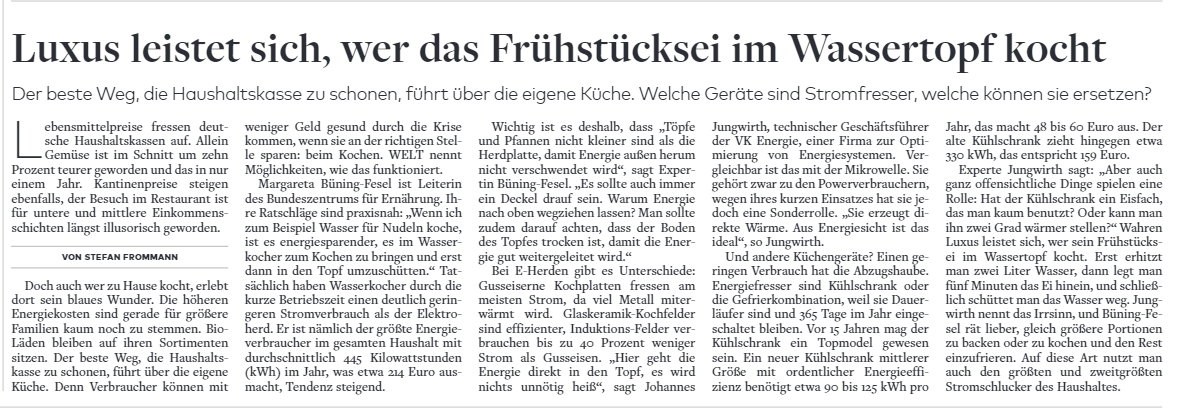Power guzzlers in the kitchen
Interview with Prof. Dr.-Ing Johannes Jungwirth on the energy efficiency of various kitchen appliances
The Welt Zeitung has an exciting interview with Johannes on electricity guzzlers in our kitchens. Here is an excerpt with simple electricity-saving tips.
“There are differences in electric stoves: Cast-iron cooktops consume the most electricity because a lot of metal is heated. Glass ceramic cooktops are more efficient, and induction cooktops consume up to 40 percent less electricity than cast iron. “Here, the energy goes directly into the pot; nothing gets unnecessarily hot,” says Johannes Jungwirth, technical director of VK Energie, a company that optimizes energy systems.
This is comparable to the microwave oven. It is one of the power consumers, but because of its short use, it has a special role. “It generates direct heat. From an energy point of view, that’s ideal,” says Jungwirth.
And other kitchen appliances? The exhaust hood has a low consumption. Energy guzzlers are the refrigerator or the freezer combination, because they are continuous runners and stay on 365 days a year. Fifteen years ago, the refrigerator may have been a top model. A new medium-size refrigerator with decent energy effi ciency uses about 90 to 125 kWh per year, which adds up to 48 to 60 euros. The old refrigerator, on the other hand, draws about 330 kWh, the equivalent of 159 euros. Expert Jungwirth says: “But obvious things also play a role: Does the refrigerator have an ice compartment that you hardly ever use? Or can you set it two degrees warmer?”
True luxury is afforded to those who cook their breakfast egg in a water pot. First you heat up two liters of water, then you put the egg in for five minutes, and finally you pour the water away. Jungwirth calls this insanity, and Büning-Fesel prefers to bake or boil larger portions and freeze the rest. That way, you’re also using the biggest and second-biggest power guzzlers in the household.”

